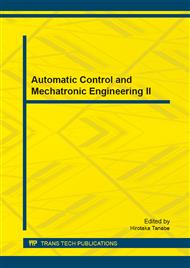p.672
p.677
p.683
p.687
p.692
p.697
p.702
p.708
p.712
A Method to Calculate Carbon Footprint of Processing Sectors Based on Gaussian Mixture Model
Abstract:
Carbon footprint is used to measure the impact of products or services on environment in recently years. The main technology in evaluating carbon footprint comes from LCA and PAS2050. However, the detail in calculating carbon footprint is not well studied. In this paper, the focus was drawn on the processing sectors. Due to the statistical character of data collected in processing sectors, the GMM (Gaussian Mixture Model) is introduced to calculate carbon footprint. With this method, the statistical meaning of carbon footprint data is well understood.
Info:
Periodical:
Pages:
692-696
Citation:
Online since:
September 2013
Authors:
Keywords:
Price:
Сopyright:
© 2013 Trans Tech Publications Ltd. All Rights Reserved
Share:
Citation:


